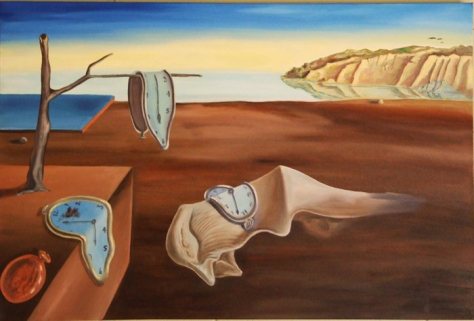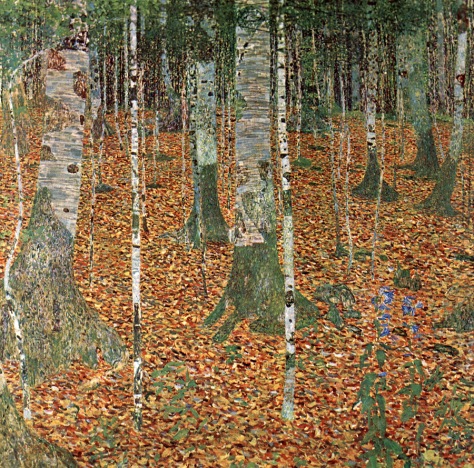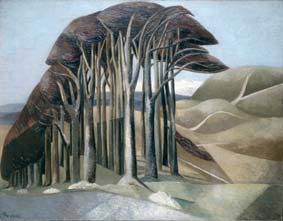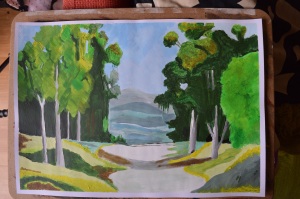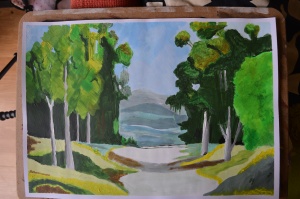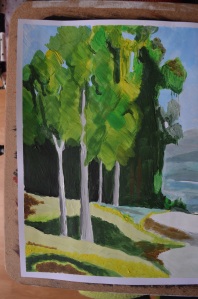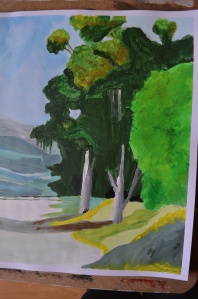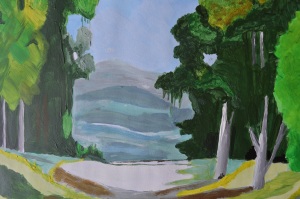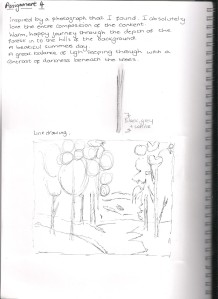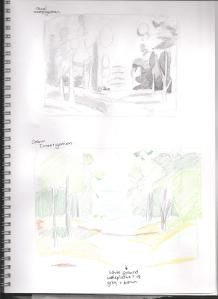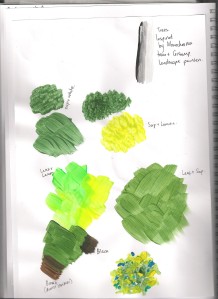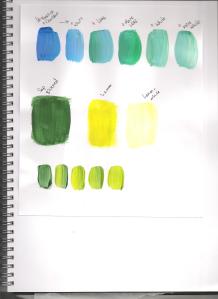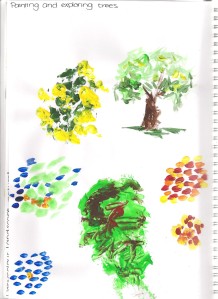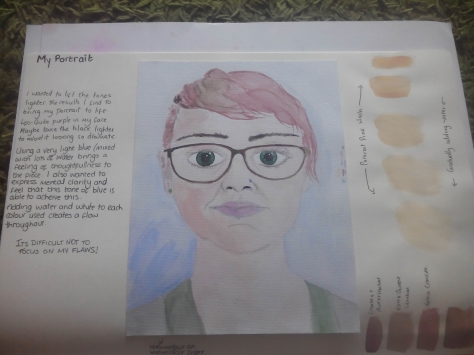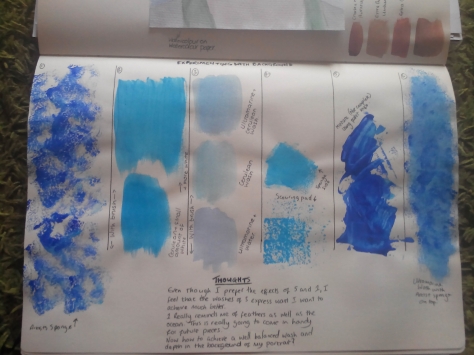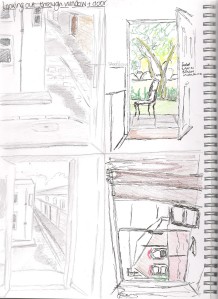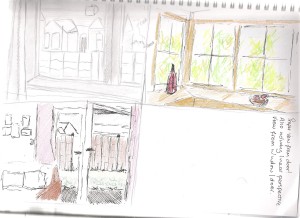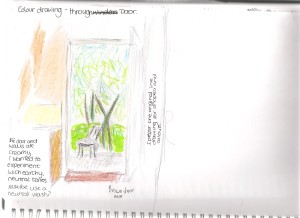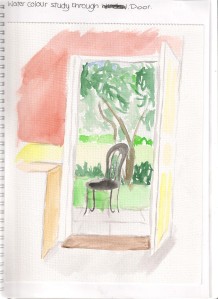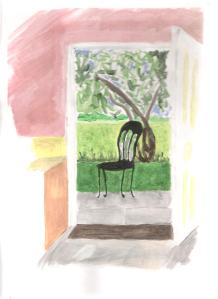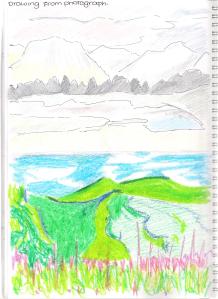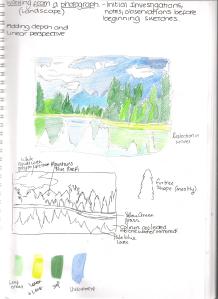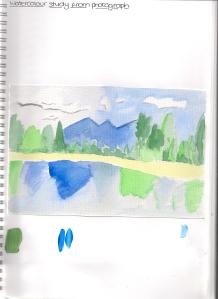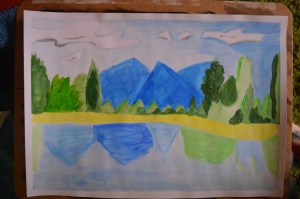Modern and Contemporary exhibition:
Mill and Essex1938
John Aldridge 1905-1983
Made by Contemporary Lithography limited 1936-1939
Attracted to rural locations. Escape. Aligned himself with British Romantic landscape painting. Captures the spirit of the locations.
Paper shortages of war brought this short lived initiative to an end.
I really love the way that the artist conveyed the trees. They have been of personal inspiration in to my own work. They are similar to the shapes used in many of the contemporary paintings that I have been really enjoying.
Still life 1941
Mary Potter 1900-1981 Oil on Plywood.
Potter painted casual arrangements of her objects in order to concentrate on the act of painting. Thickly and quickly, visible brushstrokes, textured surface, marks only approximating appearances.
I really enjoyed the playful freedom with her paint and enjoyment of exploring painting itself.
Semi-Sunset 1995
Colin Blanchard b. 1952
Photo-etching on paper
Personal note to research this!
Gartside street, Manchester 1942
Arthur Sherwood Edwards 1887-1960
Pencil on paper
I wanted to remember this and take note of its brilliant use of line and tone, etc.
Lansdowne Place East and Lasdowne Crescent, Bath 1942
JohnPiper 1903-1992
Watercolour with ink, pastel and chalk on paper.
Commissioned by the war artists advisory committee 1940-1941 to record devastating effects of the war on British landscapes (bomb damage).
Produced a series of watercolours focused on Georgian domestic architecture of Lansdowne where bomb damage was greatest. 1800 houses left inhabitable.
I absolutely loved this piece. The chosen mediums are my favourite and really work well together. I absolutely got lost in this creation.
Interior 1964-65
Richard Hamilton 1922-2011
Screenprint
Published by Petersburg Preet Limited, Edition of 50.
Inspired by a still from a film “Shockproof” 1949 (which Hamilton found by chance)
Film: None of the walls joined and perspective distorted and lighting came from different sources.
Hamilton replicated collage cuttings from different sources and photographing in black and white. Rearranging in to a composite image and then adding colour. Increased the fragmentation by mixing historic and modern furnishings, highly detailed patterns and areas of black abstraction including a woman from a contemporary washing machine advert and part of the drawing room belonging to Claude Monet’s daughter.
Result: visually unsettling view of domestic interior. Meaning cannot be deciphered.
Hamilton pioneer of British pop art, regarded fine art, photography and popular culture as a creative continuum.
I really do enjoy seeing how artists bring together various forms of creative art in order to voice and convey what they want to express. This for me was a really brilliant example of how the creative arts work together.
Impressionists:
Palm Trees at Le Cannet (about) 1924
Pierre Bonnard 1867-1977
Oil on canvas.
Positioned next to nude (with trees in).
Bonnard and Edouard Vuillard- last of impressionists taking their exploration of the painting of light well in to the 20th century. Patterns of strong sunlight on shaded gardens was popular Impressionists theme. Allowed painter to explore the effect of the eye of both deep shade and dazzling sunlight in 1 painting. Le Connet- near Cannes- South of France- his home Le Bosquet from 1925 until death.
I couldn’t help but fall in to this painting. The texture and colour was my personal taste and what I want to achieve through my own work.
Paradise Row, Bath
Walter Richard Stickert 1860-1942
Oil on Canvas
There wasn’t any writing with this painting. However it is landscape that I wanted to record for later research.
Summer in Cumberland 1942-5
James Durden 1873-1964
Oil on Canvas
(View through window) Born in Manchester and studied at the Manchester School of Art. Painted from his own house in Lake Distict. Siddaw Bank- Overlooking Derwent Water. Includes his family. Strong sunlight and light airy colours.
I absolutely loved the light and detail in this piece and was very drawn to the grande scale of the painting. A very successful view through a window.
Overall this was a really enjoyable gallery trip. There was so many pieces of inspiration and of personal interest to me.
